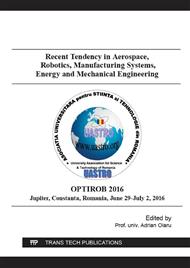p.65
p.72
p.77
p.83
p.91
p.97
p.105
p.110
p.116
The Potential of Renewable Energy in the Republic of Moldova: A Case Study
Abstract:
This article presents evidence to support the Republic of Moldova’s foreign energy dependence by providing information related to their current energy situation, energy imports and associated costs.The article places a specific emphasis on locating the primary origins and effects of Moldova’s energy dependency and examines the potential of renewable energy sources to diminish this energy dependency. In order to conduct the research for this article, data was collected through semi-structured interviews that were carried out in Moldova. Various energy experts and other officials and practitioners were interviewed. Information was also retrieved from a variety of sources that included the Moldova Country Report on Moldova’s Energy Sector and from the United Nations Development Program’s Moldova Energy and Biomass Project. The article shows that Moldova is in a position of energy dependence but there is potential from renewable energy sources to decrease this dependency.
Info:
Periodical:
Pages:
91-96
Citation:
Online since:
June 2016
Keywords:
Price:
Сopyright:
© 2016 Trans Tech Publications Ltd. All Rights Reserved
Share:
Citation:


